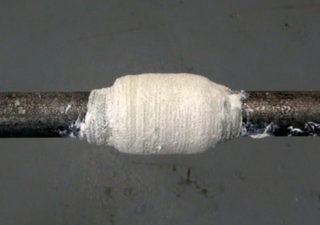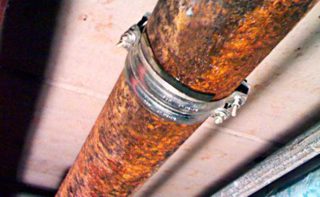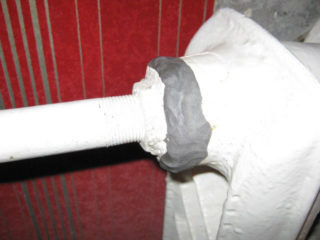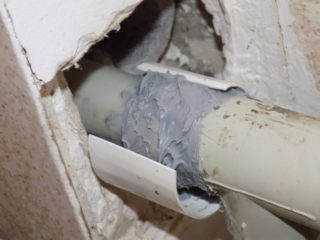Any heating system consists of pipes and radiators. Often, with the arrival of the heating season, we are faced with the appearance of a leak in the pipes, as well as at the places where the pipes are attached to the radiators. Of course, the malfunction can be eliminated by calling a specialist, however, emergency cases often arise when it is difficult to do this or it is necessary to eliminate the malfunction immediately.
Option 1
To do this, the place of leakage is tightly tied with a bandage and coated with oil paint. However, this method may not always help. As an alternative to paint, you can use cement mortar, which is diluted to a liquid state.
Option 2
The clamps are attached over the rubber, including one of them can be tightened directly at the point of leakage (if the surface is flat).
Option 3
If the pipe is depleted in a place where there are no abutments and joints, the simplest and most effective option is to use a factory clamp, which can be purchased at any hardware store. The principle of its operation is very simple: the product is simply applied over the pipe, and the bolts are clamped with a screwdriver.
Option 4
Liquid welding can be one- and two-component. There is no significant difference in them. If you use a two-component, the composition must be thoroughly mixed until a homogeneous mass is formed. Before coating with liquid welding, the pipe or the place adjacent to the radiator must be thoroughly cleaned of the formed rust.
As ancillary tools, you can use a simple knife or fine sandpaper. Cold welding should be applied directly to the leak. In this case, the composition must be pressed strongly, and after application, hold for about 20 minutes.
Option 5
To do this, you must turn off the water. Then, using keys (for example, gas), the connection is carefully unscrewed by unscrewing the clamping sleeves. If it is not possible to unscrew the connections, you can heat the problem surface with a gas burner (also available at a hardware store).
When using open fire, you must first take care of preventing the possible fire of wooden structures and wallpaper.
After the place of leakage has been disassembled, it is necessary to clean the metal surface, and then treat it along the thread with a sealing material (tow with silicone or a special thread). Next, we make the assembly by clamping the couplings.
General recommendations
It should be remembered that in each of the above options, if possible, you must first take measures to shut off the tap that supplies water to the heating system.
Also, one should not forget about prevention. The heating system in your home will last as long as possible if you take care of protecting the connections from corrosion during installation. So, after installing pipes and heating batteries, the metal must be coated with a primer. After drying, it is painted with oil paint.
If, during operation, places of rust are revealed, the area must be cleaned again to metal, and then the painting procedure must be repeated.
At present, it is recommended, when installing a heating system, to use not metal, but polypropylene pipes, which are mounted by soldering. This type of material does not corrode, and, if necessary, you can replace the area or insert an additional radiator by cutting the circuit and soldering the necessary elements.
Any of the listed methods of troubleshooting a heating system is a temporary solution. Sooner or later, the places of leakage will need to be replaced by contacting qualified specialists.











